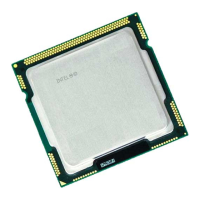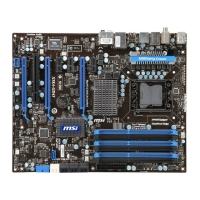Language Implementation
7-57
7
output-spec
is numbered. The first operand in the
out-list
is
numbered 0, the second is 1, and so on. Numbering is continuous through
the
out-list
, and into the
in-list
. The total number of operands is
limited to 10 (i.e., 0-9). See
substitution-directives
above.
in-list
in-list input-spec
[,
in-list
]...
Similar to an
out-list
, an
in-list
consists of one or more
input-
specs
separated by commas. For the purposes of substitution in the
asm-template
, each
input-spec
is numbered, with the numbers
continuing from those in the
out-list
.
clobber-list
clobber-list clobber-spec
[,
clobber-list
]...
A
clobber-list
tells the compiler that the asm uses or changes a real
machine register that is either coded directly into the asm or is changed
implicitly by the assembly instruction. The
clobber-list
is a comma-
separated list of
clobber-specs
.
output-spec
output-spec
"=
constraint
" (
C language object
)
The
output-specs
tell the compiler about objects whose values can be
written by the inserted assembly instruction. In order to more fully
describe the output effects of the asm, you can list
output-specs
that are
not actually referenced in the
asm-template
. See the synmovq and
attadd examples below for specific examples of this.
input-spec
input-spec
"
constraint
" (
C language expression
)
The
input-specs
tell the compiler about expressions whose values may
be needed by the inserted assembly instruction. In order to more fully
describe the input requirements of the asm, you can list
input-specs
that
are not actually referenced in the
asm-template
. See the synmovq and
attadd examples below for examples of this.

